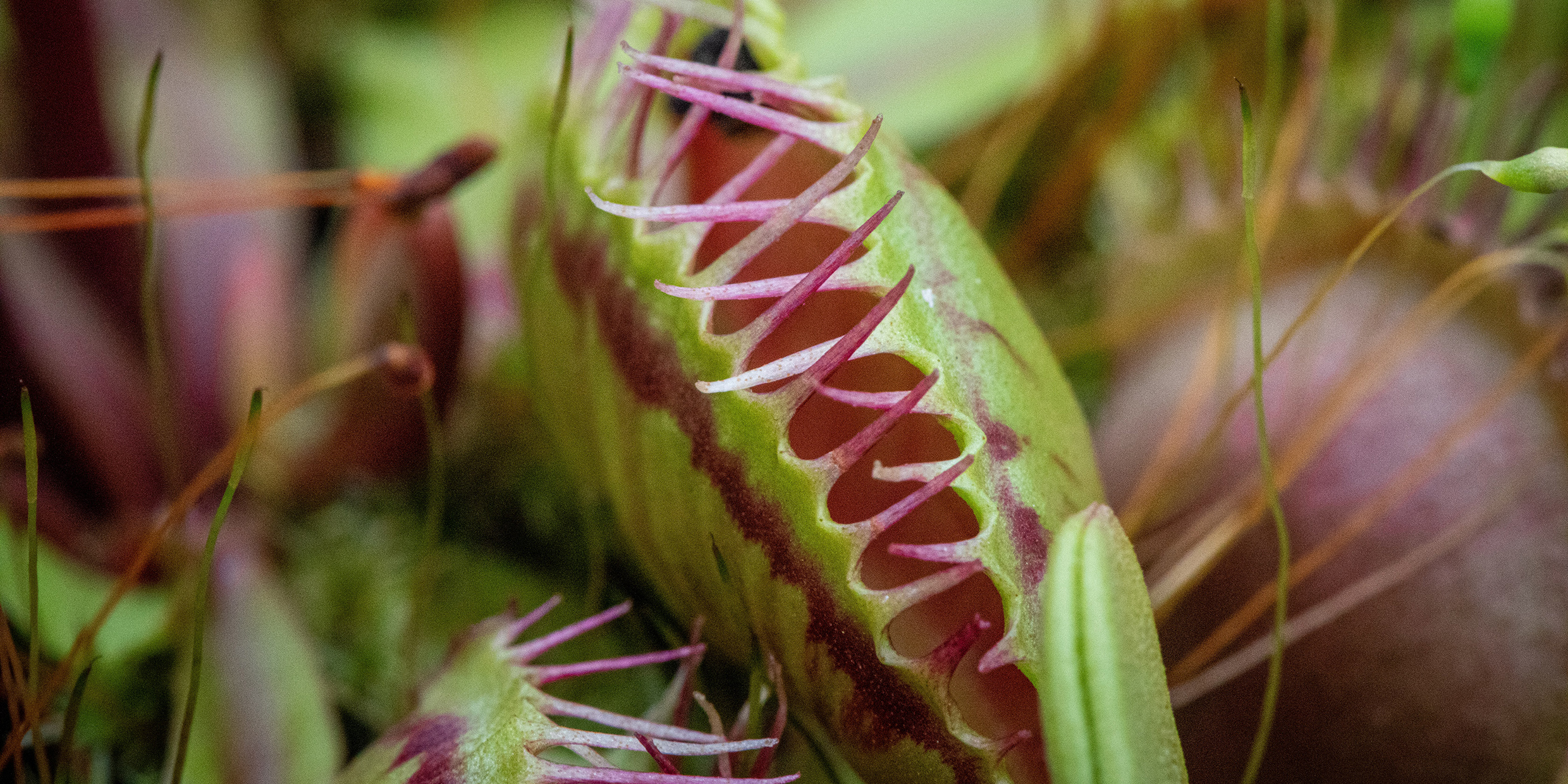Originally published 1 October 2002
Animals eat plants. So, why don’t plants eat animals?
They do — although not with the same universality.
In evolution, as in human culture, necessity is the mother of invention. Animals must eat plants to survive, or eat other animals that eat plants. Only plants have the ability to capture and store useful energy from sunlight, by photosynthesis. Without plants to provide energy, animal life would be a nonstarter.
But plants need chemicals to build tissue, and animals are ready sources of nitrogen compounds and amino acids. Reason enough, it would seem, for plants to eat animals.
Plants do feed on decaying animal matter in the soil. Native Americans put a dead fish in the hole with each seed of corn, for fertilizer. They understood that animal flesh can be useful food for plants.
But this is not quite what we mean by “eating.” Eating implies the active capture and consumption of nourishing prey. Here, plants are at a disadvantage. Most plants are rooted. If a plant is going to eat an animal, the animal must come to the plant.
That means mostly insects, which come to plants for nectar. But since plants often rely on insects as pollinators, it doesn’t make sense for them to eat the very animals they depend on.
Nevertheless, a few hundred species of plants (of hundreds of thousands of plant species worldwide) trap and devour insects and other small animals. For these plants, eating animals makes evolutionary sense. Most carnivorous plants live in bogs or moorlands where mineral resources are scarce. They can live without “meat,” but they do better with it.
Carnivorous plants can be classified by how they catch their prey.
- Drowners, like the pitcher plant, shape their leaves into buckets. The buckets collect pools of water in which unsuspecting prey, enticed by nectar, might inadvertently drown. Usually, the insides of the buckets are coated with downward-pointing bristles or waxy surfaces that keep the victim from climbing out. The unlucky prey are digested at leisure by bacteria in the water, or by enzymes secreted by the plant. I’ve heard it said that large pitcher plants have occasionally dined on frogs or mice.
- Flypapers, like the sundews, have a sticky coating that snares the prey. Then tendrils or leaves hold the victim tight while the plant secretes digestive juices.
- Snap traps, like the Venus flytrap and the aquatic waterwheels, have leaves shaped into traps that snap shut when touched. The waterwheels get their name from the circular arrangement of their traps, like blades on a water turbine.
Of these, the Venus flytrap is everyone’s favorite carnivorous plant. With its spiky bear-trap leaves and hair-trigger aggressiveness, it suggests just how nasty plants might be if evolution had taken a different turn. The Venus flytrap is the saber-toothed tiger of the plant world, or at least the piranha.
How did these meat-eating strategies evolve? And why?
Charles Darwin, the father of evolution, wrote a whole book about carnivorous plants. During one of the gloomiest, unhealthiest periods of his life, he labored heroically to understand these curious creatures. He raised them in his greenhouse. He collected sundews from the nearby heaths, and obtained Venus flytraps from the Carolinas. He examined pitcher plants and waterwheels, too.
He tested the reflexes of the plants by dabbing on milk, urine, saliva, alcohol, tea. He served them food from the family pantry to see what they could digest, including English roast beef. The plants devoured their food like animals, he observed, secreting digestive juices.
He guessed at the evolutionary relationships between the plants. He believed, for example, that waterwheels are more closely related to the Venus flytrap than to sundews.
Botanists of the early 1990s took issue with Darwin’s family history of the plants, based on a comparison of physical features and DNA analysis of a few species. Waterwheels are related to sundews, they decided, and the Venus flytrap evolved independently.
A new and more extensive analysis of the plant DNA, published in the September 2002 issue of the American Journal of Botany, shows that Darwin was right after all. Now, with the family tree of the carnivorous plants sorted out, botanists can get back to figuring out when and how these plants evolved, and why plants that eat animals are so rare.
Hollywood wonders, too. Giant man-eating Venus flytraps are a staple of sci-fi horror flicks. How’s this for a plot: Somewhere on another planet, where evolution took a somewhat different track, a race of bloodthirsty plants is even now plotting an assault on Earth, to even the score with human vegetarians. Call it “Revenge of the Tofu.”



